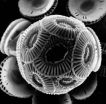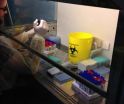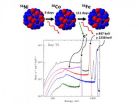(Press-News.org) To the careful observer, a person's face has long provided insight into what is going on beneath the surface. Now, with the assistance of a web camera and software algorithms, the face can also reveal whether or not an individual is experiencing atrial fibrillation, a treatable but potentially dangerous heart condition.
A pilot project, the results of which were published online today in the journal Heart Rhythm, demonstrates that subtle changes in skin color can be used to detect the uneven blood flow caused by atrial fibrillation. The technology was developed in a partnership between the University of Rochester School of Medicine and Dentistry and Xerox.
"This technology holds the potential to identify and diagnosis cardiac disease using contactless video monitoring," Jean-Philippe Couderc, Ph.D., with the University of Rochester's Heart Research Follow-up Program. "This is a very simple concept, but one that could enable more people with atrial fibrillation to get the care the care they need."
Atrial fibrillation is an irregular or sometimes rapid heart rate that commonly causes poor blood flow to the body. This occurs when erratic cardiac electrical activity causes the upper and lower chambers of the heart to beat out of sync. More than three million Americans suffer from the disease.
While, the condition can be readily diagnosed, in many people it goes undetected, either because it comes and goes or because the symptoms – fatigue and weakness – are too general to warrant concern. Consequently, it is estimated that 30 percent of the people with atrial fibrillation do not know they have the condition.
Furthermore, while atrial fibrillation is treatable if detected – both by medication and through a procedure that essentially resets the heart's electrical activity – many individuals with the condition will experience a re-occurrence. If untreated, the condition places individuals at a significantly higher risk for blood clots and stroke.
The technology described in the study employs a software algorithm developed by Xerox that scans the face and can detect changes in skin color that are imperceptible to the naked eye. All this requires is that the subject remain still for 15 seconds.
Sensors in digital cameras are designed to record three colors: red, green, and blue. Hemoglobin – a component of blood – "absorbs" more of the green spectrum of light and this subtle change can be detected by the camera's sensor. In turns out that the face is the ideal place to detect this phenomenon, because the skin is thinner than other parts of the body and blood vessels are closer to the surface.
The study participants were simultaneously hooked up to an electrocardiogram (ECG) so results from the facial scan could be compared to the actual electrical activity of the heart.
The researchers found that the color changes detected by video monitoring corresponded with an individual's heart rate as detected on an ECG. Essentially, the irregular electrical activity of the heart found in people with atrial fibrillation could be identified by "observing" the pulses of blood flowing through the veins on the face as it absorbed or reflected green light with each heartbeat.
The study found that the video monitoring technique – which researchers have dubbed videoplethymography – had an error rate of 20 percent, comparable to the 17 to 29 percent error rate associated with automated ECG measurements.
While the pilot study was only conducted on 11 people and intended to demonstrate that the technology was feasible, the researchers are now in the process of evaluating the technology on a larger study population, including those without atrial fibrillation.
Couderc contends that these new studies – coupled with the application of image stabilizing technology and the ongoing improvement in the resolution of cameras – will lower the error rate. "This study was intended to be a proof of concept and, as is the case with many new technologies, we believe that we can significantly improve its accuracy and the usability," said Couderc.
Like many other personal health technologies that have emerged in recent years, the authors see this as a way to diagnose or monitor people at risk for atrial fibrillation and alert them and/or their physicians when the condition is detected. The contactless nature of the technology and the proliferation of web cameras could even eventually allow the screening to occur without interrupting the user. For example, the program could run in the background while someone is reading their email on their tablet, computer, or smart phone.
INFORMATION:
Additional authors include Derick Peterson, Xiaojuan Xia, and Burr Hall with the University of Rochester, and Survi Kyal, Lalit Mestha, and Beilei Xu with Xerox. The study was funded by Xerox and the Center for Emerging and Innovative Sciences, a New York State-support Center for Advanced Technology.
'Face time' for the heart diagnoses cardiac disease
2014-08-29
ELSE PRESS RELEASES FROM THIS DATE:
Not all phytoplankton in the ocean need to take their vitamins
2014-08-29
Some species of marine phytoplankton, such as the prolific bloomer Emiliania huxleyi, can grow without consuming vitamin B1 (thiamine), researchers have discovered. The finding contradicts the common view that E. huxleyi and many other eukaryotic microbes depend on scarce supplies of thiamine in the ocean to survive.
"It's a really different way to think about the ocean," says CIFAR Senior Fellow Alexandra Worden, co-author on The ISME Journal paper with CIFAR fellows John Archibald (Dalhousie University), Adrián Reyes-Prieto (University of New Brunswick) and three lead ...
Ready for mating at the right time
2014-08-29
This news release is available in German. The exchange of chemical signals between organisms is considered the oldest form of communication. Acting as messenger molecules, pheromones regulate social interactions between conspecifics, for example, the sexual attraction between males and females. Fish rely on pheromones to trigger social responses and to coordinate reproductive behavior in males and females. Scientists at the Marine Science Center at the University of the Algarve in Faro, Portugal, and at the Max Planck Institute for Chemical Ecology in Jena, Germany, ...
China's reform of R&D budget management doesn't go far enough
2014-08-29
In almost 20 years, China's R&D expenditure as a percentage of its gross domestic product has more than tripled, reaching 1.98 per cent in 2012. This figure surpasses the 28 member states of the EU, which collectively managed 1.96 per cent.
However, despite this, China saw a sharp decline in money spent on scientific research, in particular applied research. Basic research funding plummeted from 5.2 per cent in 1995 to 4.7 per cent in 2011, and applied research funding fell from 26.4 per cent to 11.8 per cent in the same years.
This is Dr Cao's second Science article ...
Snails tell of the rise and fall of the Tibetan Plateau
2014-08-29
Boulder, Colo., USA - The rise of the Tibetan plateau -- the largest topographic anomaly above sea level on Earth -- is important for both its profound effect on climate and its reflection of continental dynamics. In this study published in GSA Bulletin, Katharine Huntington and colleagues employ a cutting-edge geochemical tool -- "clumped" isotope thermometry -- using modern and fossil snail shells to investigate the uplift history of the Zhada basin in southwestern Tibet.
Views range widely on the timing of surface uplift of the Tibetan Plateau to its current high ...
Science advice to governments comes of age at Auckland conference
2014-08-29
Auckland, New Zealand (29 August) — Science advice to governments has emerged as a discipline in its own right, which is both art and science. This is what delegates to the world's first summit of science advice heard at a meeting in Auckland, which closed today with a strong call to strengthen international collaboration, an agreement to formalise the network and meet again in 2016.
Convened by the International Council for Science (ICSU) and hosted by New Zealand's Chief Science Advisor, Sir Peter Gluckman, this historic summit marks a turning point in the global awareness ...
Intervention needed for survivors of childhood burns
2014-08-29
Adults who have been hospitalized for a burn as a child experience higher than usual rates of depression and suicidal thoughts, according to new research at the University of Adelaide.
A 30-year follow up of childhood burns victims has been conducted by the University's Centre for Traumatic Stress Studies. They found that 42% of people surveyed had suffered some form of mental illness and 30% suffered depression at some stage in their lives.
The results, now published in the journal Burns, also found that long-term depression was an issue among the group, and 11% had ...
Can YouTube save your life?
2014-08-29
Only a handful of CPR and basic life support (BLS) videos available on YouTube provide instructions which are consistent with recent health guidelines, according to a new study published in Emergency Medicine Australasia, the journal for the Australasian College for Emergency Medicine (ACEM).
Early recognition and treatment of sudden cardiac arrest are known to improve survival for
victims.
A team of Turkish emergency medicine specialists put together the study, which reviewed educational videos from the last three years accessed via YouTube when the search terms ...
Rapamycin or FK506, which is better for SCs migration and peripheral nerve repair
2014-08-29
FK506 possesses a well-studied neuroregenerative effect, stimulating neurite extension in the presence of nerve growth factor in vitro, and enhancing nerve regeneration following nerve crush injury and isografting. However, the use of FK506 to stimulate nerve regeneration is limited because of the risk of renal failure and hypertension, and its considerable cost. With long-term allografts, FK506 alone or combined with other drugs reportedly cause life-threatening infections. Like FK506, rapamycin is an immunosuppressant and FKBP-12-binding ligand, and has a neuroregenerative ...
MERS: Low transmissibility, dangerous illness
2014-08-29
The MERS coronavirus has caused disease outbreaks across the Arabian Peninsula and spread to Europe several times. The severe pneumonia virus has claimed the lives of several hundred people since its discovery in 2012. For a long time, scientists have been puzzled over how easily the pathogen spreads from human to human. An international team of researchers led by virologists from the University of Bonn have now come to the conclusion, through direct observation, that the rate of human transmission is low. Still, a third of infected persons with symptoms die. The results ...
Astrophysicists report radioactive cobalt in supernova explosion
2014-08-29
A group of astrophysicists, including researchers from MIPT, have detected the formation of radioactive cobalt during a supernova explosion, lending credence to a corresponding theory of supernova explosions. Details are given in the journal Nature, one of the most cited scientific publications in the world.
The article's main author, Yevgeny Churazov (Space Research Institute of the Russian Academy of Sciences), together with his co-authors, including Sergei Sazonov of the Space Research Institute and MIPT, reported the results of their analysis of data collected with ...




